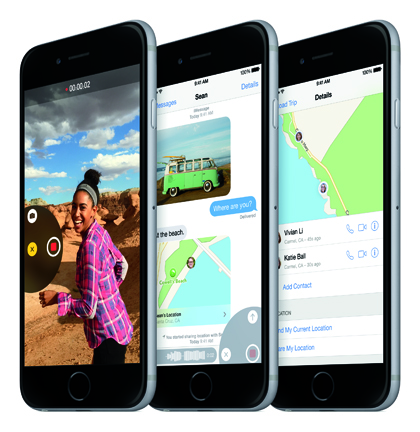In incorporating new features like Explore and trending applications in iOS 8, it’s evident that Apple is placing emphasis on browsing and discoverability. On the surface, this would seem to be a good thing, as making apps easier to find should benefit both users and marketers alike.
The problem however, is that, according to a report in Tech Crunch, there is an upper limit to the number of apps consumers use each month. As consumers discover new apps, they abandon others. Add to this that many iPhone users view the adoption of the new operating system as an opportunity to “clean house,” and for app marketers, what initially appeared to be a promising innovation to Apple’s operating system could actually prove detrimental.
For this year’s release of iOS 8, though, huge leaps forward in app marketing technology – specifically the increased viability and reach of retargeting – are helping flip the script, and enabling app marketers to excite and reconnect with their once-loyal users.
But before I discuss the steps to reengage with users, it would be beneficial to examine what makes it more possible than ever this year.
Retargeting has arrived
Improved retargeting can predominately be attributed to the industry-wide acceptance of Advertising Identifiers (aka IDFAs) across the mobile ecosystem along with Facebook and Twitter’s rise to prominence in the app marketing industry.
In the last year, the app marketing industry coalesced around IDFAs as the primary means of tracking performance on iOS. This was a result of the entire ecosystem—advertisers, publishers, and enabling technologies—wishing to rectify the industry’s fragmented tracking and attribution processes. IDFA’s maturation, coupled with advancements in programmatic media buying like real-time bidding (RTB), now makes it possible to display advertising to users who could potentially abandon an app.
On top of this, because of the incredible popularity of their mobile products, Facebook and Twitter are able to identify massive amounts of app users regardless of what device they’re currently using by tracking persistent logins. This makes retargeting possible even after users have upgrade to a new operating system—or new devices (like that iPhone 6 just around the corner).
First things first
In order to give themselves a head start in combating user decay, app marketers need to consider re-engaging as many dormant users as possible before their users begin upgrading to iOS 8 on September 17. Campaigns on Facebook, Twitter, and RTB networks can all be targeted at lapsed users.
Effective retargeting messages include:
– new features or content that former users may be unaware of
– reminders of the reasons users downloaded your app originally
– explaining how your app will improve with iOS 8, if possible
After the update
However, this does not mean the opportunity to reengage is limited to such a brief window. Last year, Fiksu identified a 33 percent increase in app downloads in the month immediately following the release of iOS 7, so users are absolutely loading up their newly updated (or just plain new) phones with apps. As a result, retargeting can also be used to great effect in the immediate release of iOS 8 to rebuild connections with loyal users.
It remains to be unseen whether iOS 8’s newly adopted browsing features will increase the frequency and rate of decaying interest in a given app. But in order to give your app the best chance of remaining relevant on the new operating system, it’s important that it remains top of mind during the time users are forming new habits and rethinking their go-to apps. Retargeting on Facebook, Twitter, and RTB is the best way to do just that.
A hit to your user base is a risk of any OS update. But thanks to advances in retargeting capabilities, you can effectively minimize any damages.






